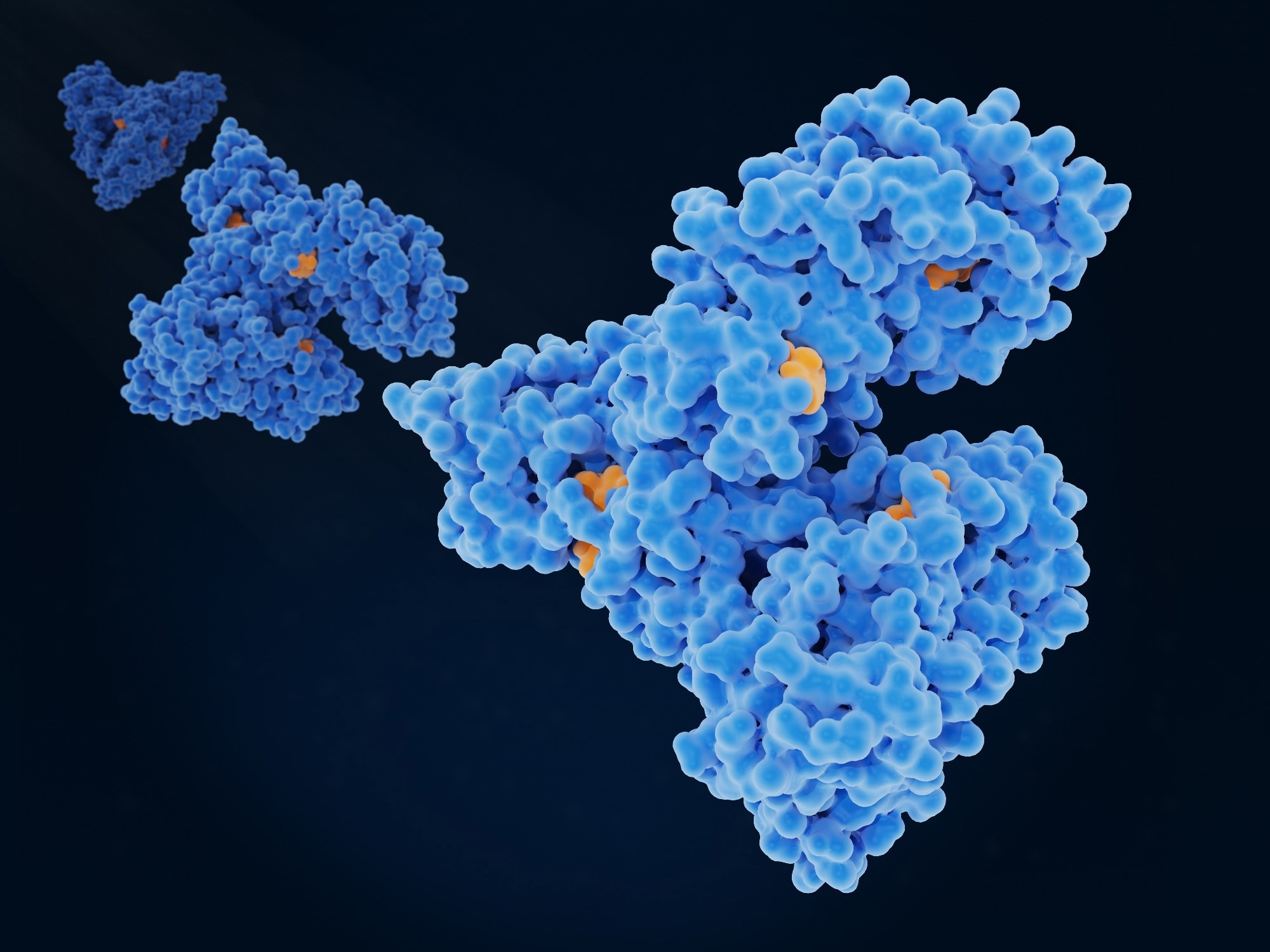Diagnosing diseases often involves enriching protein markers from biofluids. Analyzing biomarkers and their variants, such as albumin, from biofluids is crucial for understanding diseases.

Image Credit: Juan Gaertner/Shutterstock
Urine serves as an ideal source of biomarkers since it can be collected through non-invasive methods, enabling the temporal monitoring of patient conditions. Moreover, urine often reflects physiological states, as homeostasis leads to the continuous removal of biomarkers from the blood.
Human serum albumin (HSA) is the most abundant protein in circulation, accounting for 60% of plasma proteins at a concentration of 0.6 mM. However, in urine, albumin is typically filtered in the glomeruli and reabsorbed or catabolized by the proximal tubules, resulting in either the absence or deficient levels of detectable albumin.
Consequently, kidney damage and albumin leakage caused by conditions like diabetes and chronic kidney disease (CKD) may manifest as albuminuria.
Standard techniques for detecting albumin and other biomarkers from biofluids include antibody-based methods like enzyme-linked immunosorbent assay (ELISA), light scattering measurement techniques like nephelometry/turbidimetry, and instrumentation like high-performance liquid chromatography (HPLC) and mass spectrometry (MS).
These techniques often require expensive reagents or sophisticated equipment to enrich albumin from sample matrices. Pulldown methods such as affinity chromatography are also used to remove abundant albumin, which may interfere with the isolation of serum proteins of interest while allowing the separation of albumin for downstream applications.
These techniques may not provide crucial information about the presence of biomarker variants that could impact the disease. A sensitive method capable of detecting changes at the amino acid level is required to identify biomarker protein variants.
The Platinum® Next-Generation Protein Sequencing™ workflow can deeply interrogate biomarkers isolated from biofluids.
With its single molecule resolution of the amino acid sequence, Platinum can differentiate changes in the amino acid sequence and proteoform variants of the same protein, enhancing our understanding of how changes in biomarkers influence diseases.
To illustrate the isolation and sequencing of biomarkers on Platinum, HSA from urine was enriched with elevated protein levels and sequenced using the Platinum platform.

 Click here to download the whole version of the paper
Click here to download the whole version of the paper
References and further reading
- Software technical note Quantum-Si Cloud: A Scalable Informatics Platform for Protein Sequence Data Analysis
About Quantum-SI
Inspired by Ion Torrent’s success at shrinking next-generation sequencing technology into a benchtop instrument, Jonathan Rothberg founded Quantum-Si™ to bring the same semiconductor technology to protein sequencing with the launch of the Platinum® Next-Generation Protein Sequencer™.
That was in Guilford, CT, back in 2013. Fast forward to today and we now have over 1,000 patents issued and applications pending, plus a groundbreaking single-molecule protein sequencing technology platform, the Platinum.
Along the way, we solved critical challenges around sensitive and unambiguous amino acid detection, blending biology, chemistry, and semiconductor technology to help biologists see what other approaches cannot deliver. We also set the stage for a revolution in how scientists understand biology and build new treatments for disease by making single molecule protein sequencing accessible to every lab everywhere.
We are now entering a new phase of our development as a company. Starting with an initial public offering in June 2021 (QSI on the NASDAQ) and continuing with a new product development and operations facility in San Diego, CA, in 2022, we have entered a period of rapid growth. Through this expansion, we will be able to fuel a new era of biology, the post-genomic era, where biologists accelerate basic scientific insight and biomedical advances through the power of next-generation protein sequencing.
Sponsored Content Policy: News-Medical.net publishes articles and related content that may be derived from sources where we have existing commercial relationships, provided such content adds value to the core editorial ethos of News-Medical.Net which is to educate and inform site visitors interested in medical research, science, medical devices and treatments.